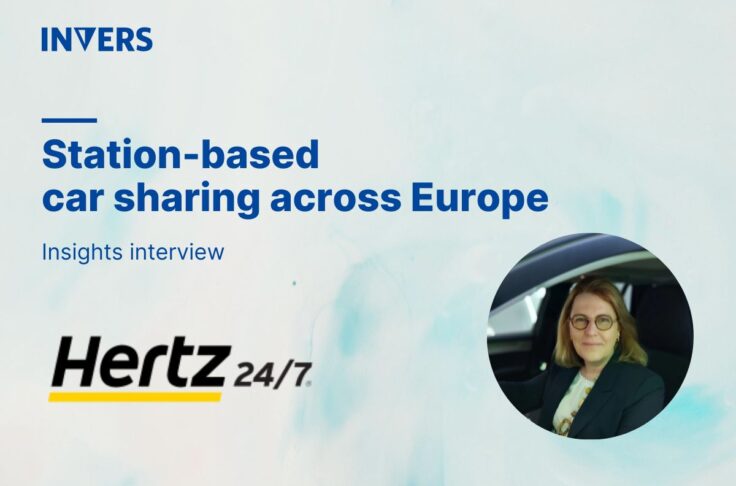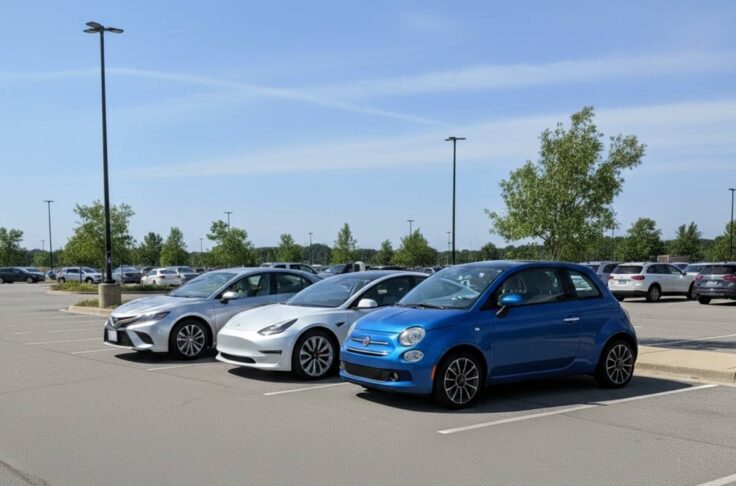Insights Interview on Peer-to-Peer Car Sharing with Getaround
Summary
We interviewed Marie Reboul, CEO at Getaround, to gain deeper insights into the development of peer-to-peer car sharing. She shared crucial perspectives on the European P2P market development, advantages for professional fleet owners, keyless access, and learnings from the EV-heavy Norwegian market. Getaround operates in hundreds of cities across Europe with more than 50,000 active vehicles on their platform. They are active in six European markets. Getaround’s platform provides both manual and digital vehicle handovers through its “Getaround Connect” technology.

The European car sharing market is complex, featuring a diverse range of business models implemented on the streets. Operators employ various strategies, such as station-based services, peer-to-peer car sharing, and free-floating services, to address distinct use cases and offer distinct services. In addition, the European car sharing market is one of the largest and the most complex in the world. To address and explain some of these complexities, INVERS publishes their INVERS Mobility Barometer on “European Car Sharing 2025”. This 76-page report helps car sharing operators quickly understand key market dynamics, insights, and trends.
Table of Contents
How has the P2P car sharing market in Europe developed over the past five years?
We’ve seen P2P carsharing becoming an increasingly popular transportation option in Europe, with strong adoption in recent years. Rising car ownership costs and the demand for convenient and flexible alternatives have been pushing individuals to adopt it.
At a higher level, there are structural trends like urban densification and expanding public transit infrastructure, that are reducing the need for private cars, and creating a need for space-efficient mobility means.
European cities and local public authorities are also promoting P2P carsharing as they reallocate urban space and look for sustainable alternatives to individual car ownership. We lead the way in that effort: our platform leverages existing vehicles, scales without subsidies, and meets urban demand sustainably. Europe is now a global hotspot for us, with rapid growth in Paris, Brussels, Barcelona, Oslo…
In addition to private users, Getaround also serves professional fleet owners. How do you enable fleet owners on your platform?
Getaround was founded around private car owners, but over the years professional fleet owners have become a unique part of our ecosystem. They allow us to meet demand with high availability, great parking locations, and a broad vehicle mix.
To support them, we have developed the Getaround Entrepreneur Program, which gives them access to tailored tools like fleet dashboards, dynamic pricing features, and large-scale keyless integration options. We bring them highly qualified rental demand, tailored insurance, customer and claims support, that enable their business to thrive in major urban hubs.
By serving both private owners and pros, our platform stands out. We enable individuals to earn extra income, and entrepreneurs to build successful businesses in the mobility space.
Keyless access is an important P2P car sharing market trend. What type of car owner typically chooses Getaround Connect, and what is the potential of keyless access for P2P?
Our Getaround Connect technology attracts two segments: urban private owners that value flexibility and hassle-free income, and appreciate the convenience of not having to meet renters in person, but also professional fleet operators that leverage the platform to manage dozens or hundreds of vehicles at scale, and handle rentals seamlessly.
Keyless access is a major enabler of P2P carsharing. It makes the service truly on-demand: drivers can book, unlock, and return a car with their smartphone, without the friction of coordinating with the car owner. This boosts convenience, increases utilization, and supports expansion into neighborhoods where handovers are impractical.
How can the success of EVs in your Norwegian market prepare us for the electric transition in markets with fewer EVs? What are the key takeaways?
Norway is a unique case study for us, with 90% of new cars sold being electric. It gives us early insights into the EV transition, from charging integration to user behavior.
Three key lessons emerge. First, users adopt quickly once charging networks are developed and reliable. Second, many want to try electric driving but worry about range or charging. Third, operational details matter. Providing optimal charging locations, range-based pricing, and incentives for proper returns is essential. Clear guidance, reliable infrastructure and user education are crucial to boost adoption and ensure a great user experience.
These insights give us a head start in other markets, where EV adoption is rising but not yet as widespread as in Norway.
Further insights into the European car sharing market
Thank you, Marie, for sharing your expert insights.
For more information and interesting findings about European car sharing, we encourage readers to check out our 76-page INVERS Mobility Barometer on “European Car Sharing 2025” with more expert interviews as well as insights from national car sharing associations. To discover more from Getaround, please visit their website.


